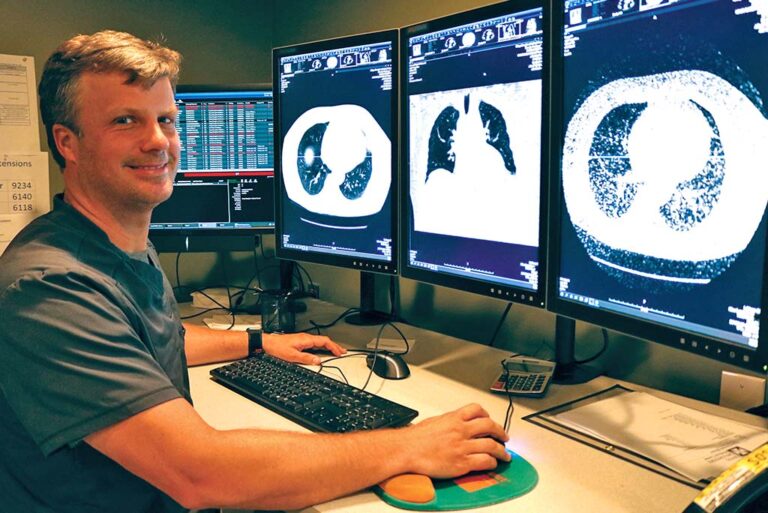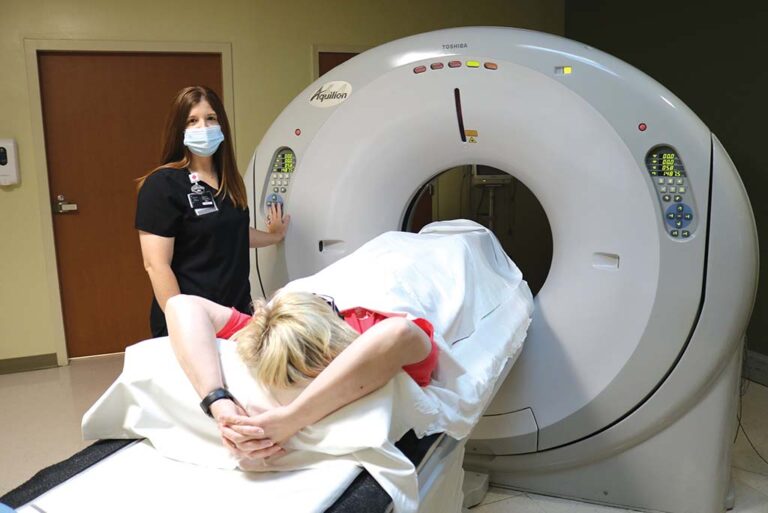Lung Screenings Catch Cancers When They’re Most Treatable
- Category: Cancer Care
- Posted On:

“The only way to catch them early, before they start showing symptoms, is by doing this screening,” said KDMC Radiology Director Wanda Biokua. The procedure involves a low-dose CT scan that’s noninvasive, delivers relatively little radiation and takes only five minutes.
In 2020, an estimated 228,820 people in the United States were diagnosed with lung cancer, and 135,720 people died of the disease, according to the National Cancer Institute. Black men have the highest rate of lung cancer, followed by white women.
Overall, the five-year survival rate after diagnosis is 21%, according to the institute. When the cancer is detected when it’s small, before it can spread, the five-year survival rate is 59%.
No Chemo or Radiation
“If the cancers are found early, they may be treatable with only surgery — no chemotherapy and no radiation,” Biokua said. “If you find them early enough, the majority of them are curable. But you have to find them early.”
Here’s who the annual screening is for:
- Adults 50 to 80 years old
- Who have a 20 pack-year smoking history
- Who currently smoke or have quit within the past 15 years
- Who have not had a full-dose chest CT scan in the past year
Those criteria come from the U.S. Preventive Services Task Force, an independent panel of experts in disease prevention. A pack year is one pack of cigarettes per day for 20 years or the equivalent: two packs a day for 10 years, for example, or half a pack a day for 40 years.
Other Risk Factors
Other risk factors might also qualify someone for screening:
- Major contact with radon or diesel fuel
- Contact with asbestos or other cancer-causing agents
- Contact with secondhand tobacco smoke
- Chronic obstructive pulmonary disease (COPD) or emphysema
A CT scan uses a series of X-ray images taken from different angles to create a more detailed look inside the body than a conventional X-ray. The lung screening scan is “a very easy test,” said Lauren Thompson, RT, a CT technologist at KDMC.
“You’ll lie on the table and have to raise your arms above your head and listen to the breathing protocols,” Thompson said. “I’ll tell you when to hold your breath and when to breathe. That’s it.”

Incidental Findings
About 40% of the scans generate what are called incidental findings – indications of possible problems other than lung cancer. One that commonly shows up, for example, is calcium in the arteries, a potential indicator of cardiovascular disease. “These are things that need to be followed up as well,” Biokua said.
KDMC set up the screening program to help the community, which includes a high percentage of smokers. “We’re not trying to force people to quit smoking,” Biokua said. “If you want to quit, we’re here to help you do that. But if you’re going to continue to smoke, you’re going to continue to smoke. Our goal is, let us catch these cancers early so that you can be treated and you can still be there for your family.”
There’s no hard sell for smoking-cessation classes and no judgment. “This is a loving, Christian environment,” Biokua said, “and we want people to be taken care of. That’s the ultimate goal.”
The screening can be scheduled without a physician’s referral and only costs $100 – no insurance is filed for the screening. For more information about lung cancer screening or for an appointment, call 601.835.9133.